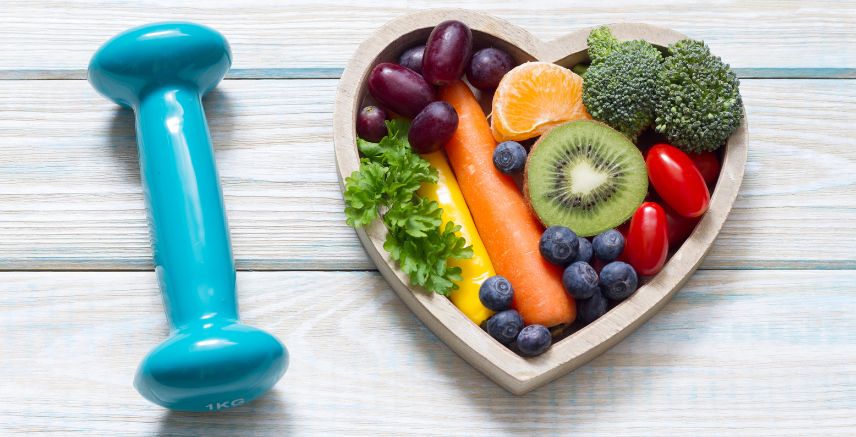Heart-Healthy Choices
A heart attack involves decreased blood flow to the heart. It can occur due to clogged arteries and coronary artery disease. In some cases, someone may need an angioplasty and/or stent to keep the arteries open.
After either a heart attack or a stent, it is helpful to make any needed lifestyle changes to stay healthy and reduce the risk of further heart problems. Lifestyle changes may include making some dietary adjustments. The article examines the best diet after a heart attack and stents, including how nutrition can play a role in heart health.
The Best Diets Post-Heart Attack or Stent
Although no specific diet prevents heart attacks, the American Heart Association recommends the Dietary Approach to Stop Hypertension (DASH) diet and the Mediterranean diet. Both diets may be beneficial for heart health.
Dietary Approach to Stop Hypertension (DASH)
The dash diet involves eating vegetables, whole grains, fruits, low-fat dairy, nuts, fish and poultry. The diet also limits red meats, sugar, salt and fat.
Examples of foods to eat on the Dash diet include the following:
Salmon
Salmon is a fish that is rich in omega-3 fatty acids. Omega-3s may help lower triglycerides, which can contribute to heart disease. Other good sources of healthy omega-s include sardines, herring and walnuts.
Brown Rice
Brown rice is an example of a whole grain. Whole grains contain fiber, which may improve cholesterol levels. Lower cholesterol can decrease the risk of heart disease. In addition, brown rice and other whole grains contain nutrients such as vitamins B2, B3, iron and magnesium. These nutrients help carry oxygen to the blood and promote new cell formation, both of which are good for heart health. Other good sources of whole grains include oatmeal, quinoa and white rice.
Cherries
Cherries contain polyphenol, which is an antioxidant that may protect the heart. Polyphenol protects the blood vessels and may decrease inflammation.
Kale
Fresh vegetables are also part of a heart-healthy diet. Vegetables, such as kale, contain high levels of potassium, calcium and magnesium. These nutrients can help lower blood pressure and promote better heart health. Kale also contains vitamin K, which supports healthy blood clotting.
Strawberries
Strawberries contain pectin, which is a type of fiber. Pectin helps to lower levels of LDL cholesterol. Doctors also classify LDL cholesterol as “bad” cholesterol because it increases your risk of heart disease. Other fruits that contain pectin include apples, pears and plums.
The Mediterranean Diet
Like the Dash diet, the Mediterranean diet also focuses on plant-based foods, fresh vegetables and fruits, whole grains, poultry and fish. Sugar, red meats and processed foods are minimal.
According to the Mayo Clinic, studies link the Mediterranean diet to a lower risk of high blood pressure and high cholesterol, which are risks for a heart attack.
Examples of foods on the Mediterranean diet that are part of a heart-healthy diet include:
Avocadoes
Avocadoes are rich in monounsaturated fats, which may raise HDL (good) cholesterol and lower LDL cholesterol. Increasing HDL cholesterol may protect the heart. Lowering LDL may also decrease the risk of heart disease.
Flaxseed
Flaxseed contains polyunsaturated fats. This type of fat may protect the heart by lowering levels of LDL cholesterol. Other good sources of polyunsaturated fats include sunflower seeds, soybeans and olive oil.
Low-Fat Yogurt
Full-fat dairy may be acceptable in limited amounts. But low-fat dairy products like milk, cheese and yogurt may be a better option. With low-fat dairy products, you get important vitamins and minerals such as vitamins D, K and calcium but without high-fat levels. Vitamins D, K and calcium may be beneficial for cardiovascular health.
Oranges
The Mediterranean diet also includes plenty of fruits. Oranges are a good choice to provide fiber and potassium, which may help reduce blood pressure.
Dark Chocolate
Chocolate does not seem like it would be on a list of heart-healthy foods. However, it is a good source of flavonoids, which are antioxidants that may decrease the risk of stroke and coronary artery disease. Be sure to only eat dark chocolate in moderation, with just a few servings a week.
What About Other Popular Diets After a Heart Attack and Stent?
Other popular diets may help with weight loss. But are they right for heart health? Examples of these types of diets include paleo, keto and the zone diet. Although these types of diets may aid in weight loss, they do not meet the American Heart Association’s criteria for a heart-healthy eating pattern.
Remember that everyone’s nutritional needs may differ depending on their age, activity level and other underlying medical conditions. Because nutritional needs can be complex after a heart attack or stent placement, it is helpful to talk with your doctor or a nutritionist for an individual plan.

